As the quest for reducing carbon emissions accelerates, a surge in energy-efficient cars with automatic transmissions is shaping the automotive landscape. From the innovative Kia Soul to the reliable Toyota Camry, this guide illuminates the forefront of energy-saving technologies and smart features that optimize fuel consumption. Readers will unearth the latest battery advancements and understand government policies propelling the shift towards greener vehicles. By delving into this content, enthusiasts and potential buyers will not only navigate the complexities of energy-efficient models but will also gain insights to make informed decisions and contribute to a sustainable future.
Overview of Energy Efficient Car Technologies
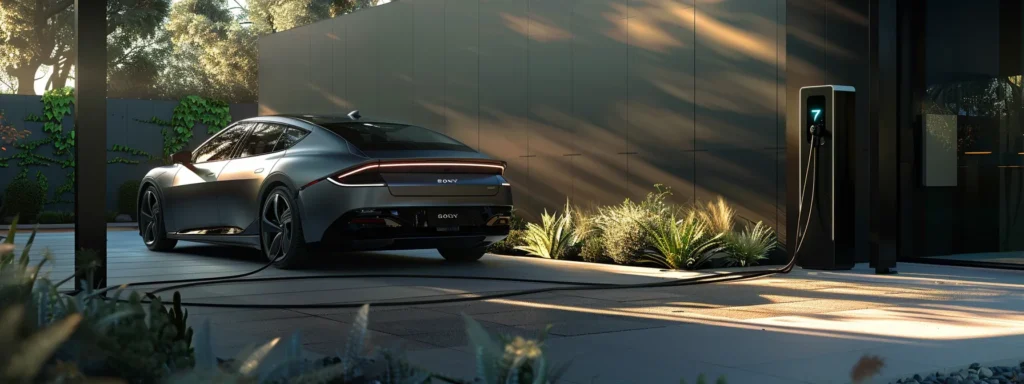
The realm of energy-efficient vehicles is expanding with innovative technologies. Hybrid vehicles, such as the Toyota RAV4 and the Hyundai Sonata, merge power with conservation, offering commendable benefits. Electric vehicles, including the Nissan Murano, mark a significant surge in the automotive sector. Plug-in hybrids like the Ioniq exemplify transitional solutions blending electric mobility with conventional fueling. Fuel cell vehicles contribute to emissions reduction, while advancements in internal combustion engines enhance overall efficiency. This section delves into these technologies, underscoring their environmental and economic impacts.
Understanding Hybrid Vehicles and Their Benefits
Hybrid vehicles, such as the Toyota Corolla, intelligently combine an internal combustion engine with electric propulsion to offer superior fuel efficiency and reduced emissions. Notably, models with a continuously variable transmission (CVT) optimize engine performance, enhancing fuel economy and the overall driving experience. As consumers become more environmentally conscious, the demand for efficient SUVs and cars is growing, making hybrids a compelling bridge to a future dominated by electric vehicles.
The Rise of Electric Vehicles in the Automotive Industry
The rise of electric vehicles in the automotive industry signifies a pivotal shift toward sustainable transportation. Electric sedans, including the Hyundai Elantra, are gaining popularity for their energy-efficient electric transmission systems, which deliver seamless propulsion without the pollution associated with traditional engines. Similarly, electric pickup trucks are emerging, providing the power and utility expected from their combustion counterparts with the added benefits of lower operating costs and minimal environmental impact.
Exploring Plug-in Hybrids as a Transitional Option
Plug-in hybrids stand on the frontier of vehicular evolution, offering an effective bridge between traditional combustion engines and the era of electrification. Models such as the Toyota Corolla Cross enable drivers to minimize their carbon footprint by significantly cutting down on pollutants and greenhouse gas emissions. These vehicles operate on a blend of gasoline and electricity, providing flexibility and extending range while laying the groundwork for a future where green initiatives take precedence. The Chevrolet Silverado, which now features a plug-in hybrid variant, illustrates how even powerful trucks are adapting to meet the growing need for sustainability without sacrificing performance.
The Role of Fuel Cell Vehicles in Reducing Emissions
Fuel cell vehicles (FCVs), like the Hyundai Ioniq, signify a groundbreaking step in curtailing greenhouse gas emissions and shifting away from reliance on gasoline. These vehicles leverage the chemical energy from hydrogen to produce electricity that powers the engine, releasing only water as a byproduct. Consumer reports have acknowledged the potential of FCVs to transform the automotive industry into a cleaner, more sustainable enterprise, illustrating their vital role in progressing toward an environmentally responsible future.
Advances in Internal Combustion Engines for Better Efficiency
Even as the transportation sector veers towards electrification, significant advancements in internal combustion engines have emerged, demonstrating that traditional powertrains can still play a role in an energy economy. For instance, the Nissan Rogue employs a variable compression turbo engine, a feat of engineering that adapts to driving conditions to optimize power and efficiency. Moreover, the Honda Accord utilizes direct injection technology to improve fuel efficiency, allowing this beloved sedan to maintain its reputation for both reliability and economy. While the minivan segment may be known more for practicality than efficiency, the latest powertrains incorporate measures to reduce smog-forming pollutants, ensuring that larger vehicles can also contribute to a cleaner environment. These innovations highlight the ongoing commitment of the automotive industry to meet stringent efficiency standards and reduce emissions across all vehicle categories.
Innovations in Battery Technology

Energy efficient cars are at the forefront of vehicular innovation, with battery technology playing a crucial role. Developments in lithium-ion batteries are enhancing range, making it possible for trucks and compact cars, like the Toyota Highlander and Mitsubishi Mirage, to drive further on a single charge. Solid-state batteries represent a leap forward with potentially game-changing impacts on durability and safety. Fast-charging technologies are reducing the time it takes for station wagons and family vehicles to recharge. Effective recycling practices are ensuring that battery components contribute to sustainability. Lastly, the integration of renewable energy into charging infrastructure underpins the greener promise of future transportation.
Developments in Lithium-Ion Batteries Enhancing Range
The latest advancements in lithium-ion battery technology have dramatically enhanced the driving range of vehicles, mitigating reliance on fossil fuels and reducing greenhouse gas emissions. For instance, advancements in battery density and efficiency have extended the Nissan Sentra‘s travel capabilities, allowing it to rival the ranges traditionally expected of larger vehicles such as the Toyota Sienna. Even hatchbacks, renowned for their compact size and city-friendly design, are experiencing a boost in range, enabling longer journeys and decreasing the frequency of charges necessary, thereby contributing to a more sustainable future in transportation.
Solid-State Batteries and Their Potential Impact
Solid-state batteries are set to revolutionize the market for energy-efficient transportation, promising to lower the cost barriers currently associated with electric car and hybrid electric vehicle ownership. Their higher energy density could lead to smaller, lighter batteries or longer ranges within the same footprint, thus enhancing energy independence. Once this technology matures and scales, it has the potential to reduce the price premium of electric cars, making them more accessible and further accelerating the transition to clean transportation.
Fast-Charging Technologies Reducing Charging Times
The advent of fast-charging technology marks a significant leap in minimizing the delay associated with electric vehicle charging, a crucial step toward mass adoption. Vehicles like the Chevrolet Bolt have benefited from developments that allow the car’s battery to replenish a considerable range of miles in just under 30 minutes at specialty charging stations. Similarly, owners of the Volkswagen Jetta and Audi electric models experience enhanced convenience with increased charging speed, reducing downtime and aligning electric car suitability with the fast-paced lifestyle of drivers. This enhancement in charging infrastructure represents a pivotal shift in the public’s perception, portraying electric vehicles not just as eco-friendly alternatives, but as truly convenient, everyday transportation solutions.
Battery Recycling Practices Supporting Sustainability
As the Ford Escape‘s electric motor transforms battery power into horsepower, sustaining this cycle becomes pivotal. Innovative battery recycling practices have emerged, which tackle environmental challenges by reclaiming materials from spent batteries, a process that significantly decreases the dependency on the extraction of raw materials like oil. Through these practices, the automotive industry not only ensures a gallon of sustainability but also supports the transition towards a circular economy, extending the lifecycle of battery components and reinforcing responsible battery stewardship in tandem with the growth of electric vehicles.
Integration of Renewable Energy in Charging Infrastructure
Integrating renewable energy sources into the charging infrastructure is transforming the way electric vehicles, like the Toyota Prius and Lexus ES, are powered. This shift is crucial for mitigating the impacts of climate change by reducing reliance on traditional fuel. The powertrain of the future not only operates with incredible efficiency but also derives its energy from clean sources, reinforcing the ethical responsibility towards environmental conservation while driving innovation in sustainable transportation.
Smart Features Enhancing Energy Efficiency
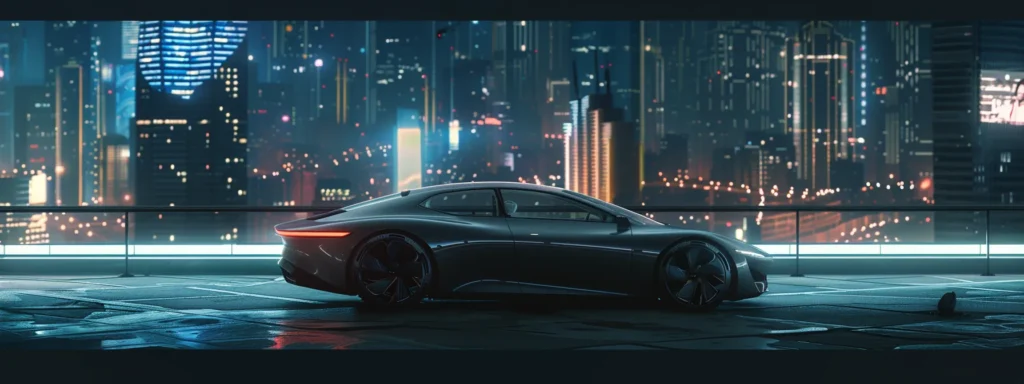
The latest advances in energy-efficient cars are not solely under the hood. Today’s vehicles feature smart technologies designed to optimize fuel efficiency. Regenerative braking systems capture and reuse energy, and intelligent energy management systems meticulously calibrate power use in modern cars. Aerodynamic designs and lightweight materials contribute to reduced energy consumption, augmenting fuel efficiency. Furthermore, connected car technologies provide a data-driven approach to improving vehicle efficiency. Each innovation plays a crucial role in advancing the efficiency of modern vehicles.
Regenerative Braking Systems Recovering Energy
Regenerative braking systems have become a cornerstone of energy recovery in modern vehicles, transforming kinetic energy usually lost during braking into usable electricity. This innovative mechanism recharges the vehicle‘s battery while slowing down, thereby enhancing the overall energy efficiency and range of electric and hybrid cars. Through this process, cars such as the Chevrolet Volt and the BMW i3 see a noticeable improvement in energy management, leading to prolonged battery life and reduced environmental impact.
Intelligent Energy Management Systems in Modern Cars
Intelligent energy management systems in modern cars are redefining vehicular efficiency. These systems, integrated into vehicles like the Ford Fusion and the Honda Civic, continuously monitor and adjust the energy flow, ensuring optimal performance while minimizing waste. By orchestrating the allocation of power between the engine, battery, and other systems, these sophisticated technologies extend the vehicle’s range, reduce fuel consumption, and decrease emissions, meeting the driver’s needs with precision and contributing to a more sustainable future.
Aerodynamic Designs Reducing Energy Consumption
Enhanced aerodynamic designs are playing a pivotal role in reducing energy consumption across various vehicle types. By refining the body shape and utilizing materials to minimize air resistance, manufacturers like Tesla and Chevrolet have achieved noteworthy improvements in fuel efficiency and range for their models. These design choices, often visible in the sleek contours of cars like the Tesla Model S, reduce drag, allowing vehicles to glide more effortlessly and use less energy, directly translating into savings for the consumer and lower environmental impact.
Lightweight Materials Improving Fuel Efficiency
Advances in the use of lightweight materials are pivotal in the pursuit of fuel efficiency for modern vehicles. Manufacturers increasingly leverage materials like carbon fiber and aluminum to construct frames and components, resulting in significant reductions in weight without sacrificing structural integrity. This shift not only improves a vehicle‘s fuel economy by demanding less power for propulsion but also enhances handling and acceleration, thereby delivering an improved driving experience while supporting environmental conservation.
The Influence of Connected Car Technology on Efficiency
Connected car technology is revolutionizing vehicle efficiency by enabling real-time data analysis and adaptive responses to driving conditions. By utilizing onboard sensors and internet connectivity, these intelligent systems optimize route planning to reduce fuel consumption, offer feedback on driving habits for improved energy use, and allow for remote monitoring of vehicle health, ensuring timely maintenance for peak performance. This smart integration leads to significant advancements in reducing emissions and enhancing the sustainability of modern transportation.
Government Policies and Incentives Driving Adoption
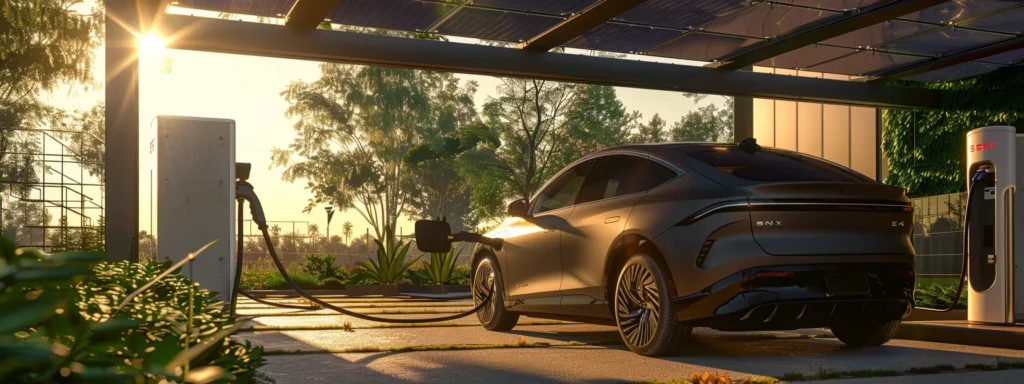
Government initiatives are imperative in the widespread adoption of energy-efficient vehicles. Tax credits and rebates incentivize ownership of such vehicles, while emission regulations drive manufacturers to pursue innovative technologies. Infrastructure development bolsters the practicality of owning energy-efficient models, and international agreements compel industry-wide change. These policies shape consumer preferences and car ownership trends, underscoring the growing intersection between public policy and automotive innovation.
Tax Credits and Rebates for Energy Efficient Vehicles
Governments around the world are fostering the shift towards greener transport by offering tax credits and rebates for energy-efficient vehicles. These financial incentives make it more affordable for consumers to acquire hybrids, electric vehicles, and fuel cell cars that might otherwise be cost-prohibitive. With such policies, individuals can reap the benefits of lower operating costs and contribute to a reduction in emissions, aligning their transport choices with environmental sustainability goals.
Emission Regulations Encouraging Technological Advances
Emission regulations have become a significant driver for innovation in the automotive industry, propelling the advancement of energy efficient technologies. Stricter standards on pollution force manufacturers to develop cleaner, more efficient vehicles; this regulatory pressure has led to the introduction of advanced powertrains and increased electric vehicle production. These efforts reflect a global commitment to reduce greenhouse gases and signal a transformative era in vehicular technology, directly benefiting consumers and the environment.
Infrastructure Development Supporting Energy Efficient Cars
Investments in infrastructure are crucial for the acceleration of energy-efficient car adoption. Governments are advancing the construction of extensive charging networks for electric vehicles, creating a backbone that supports widespread use. These developments provide the necessary confidence for consumers considering the switch to electric cars, assuring them of convenience and reliability. This strategic approach to infrastructure reinforces the commitment to a sustainable transport future and showcases the symbiotic relationship between policymaking and innovative vehicle technology.
International Agreements Impacting Car Manufacturing
International agreements such as the Paris Climate Accord exert a profound influence on car manufacturing, compelling industry leaders to ramp up production of energy-efficient vehicles. These accords stipulate ambitious targets for reducing carbon emissions, driving automakers to invest in electric, hybrid, and fuel cell technologies. The resulting innovations not only adhere to these global commitments but also offer consumers vehicles that are both advanced and responsible in their environmental footprint.
How Policies Affect Consumer Choices
Government policies heavily influence consumer choices in the market for energy efficient cars. Financial incentives, such as rebates and tax credits for purchasing green vehicles, make these options more accessible to the average consumer, often swaying their decision toward models that bear the badge of energy efficiency. Furthermore, stringent emission standards push manufacturers to innovate, leading to a market rich with advanced, eco-friendly options that appeal to the environmentally-conscious shopper.
Comparing Leading Energy Efficient Car Models
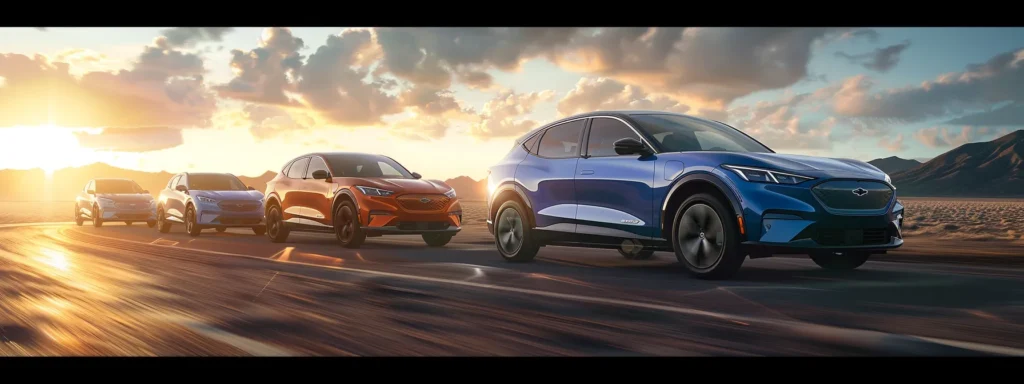
As consumers navigate the market for energy-efficient transportation, it becomes imperative to compare the leading car models that stand out in fuel economy and technology. This section offers a closer look at the top electric vehicles currently available, dissecting their unparalleled efficiency. It also examines the features that set leading hybrid models apart, evaluates plug-in hybrids for daily use, and assesses fuel economy in traditional vehicles. Lastly, it provides criteria for selecting an energy-efficient car, aiming to aid buyers in making informed decisions that align with their values and lifestyle needs.
Top Electric Vehicles Available Today
Among the top electric vehicles currently available, the Tesla Model 3 stands out for its impressive range, cutting-edge autopilot features, and sustainable production processes. Meanwhile, the Chevrolet Bolt EV offers a practical and affordable option with a sizeable battery life and user-friendly technology. The Volkswagen ID.4 is gaining attention for its smooth driving dynamics paired with a minimalist yet functional interior, embodying the blend of comfort and efficiency sought by modern drivers. These models exemplify the advancements in electric vehicles, showcasing how manufacturers cater to consumer demand for performance, sustainability, and innovation.
Leading Hybrid Models and Their Features
Leading hybrid models such as the Toyota Prius and Honda Accord Hybrid are trailblazers in merging fuel efficiency with advanced features. The Prius continues to lead with its aerodynamic design and reliable hybrid system, while the Accord Hybrid impresses with its seamless power delivery and elegant interior. Both cars embody efficiency, featuring regenerative braking and eco-friendly drive modes that empower users to optimize fuel economy and reduce emissions. These hybrids appeal to drivers seeking a practical solution that does not compromise on comfort or performance.
Evaluating Plug-in Hybrids for Daily Use
When evaluating plug-in hybrids for daily use, potential buyers should consider the dual advantage of extended electric-only range paired with the assurance of a gasoline engine for longer trips. For instance, a model like the Chevrolet Volt allows for a substantial electric-only mileage suitable for daily commuting, while also providing the flexibility of a traditional engine, making it ideal for unplanned extended journeys. This combination affords drivers the convenience and efficiency of an electric vehicle with the range security of a conventional car, making plug-in hybrids an excellent choice for those looking to make a gradual transition to electrified driving with minimal range anxiety.
Assessing Fuel Economy in Traditional Vehicles
In assessing the fuel economy in traditional vehicles, consumers must critically examine parameters such as miles per gallon (MPG) and the efficiency of the engine‘s powertrain. While not as advanced as their hybrid or fully electric counterparts, many modern gasoline-powered cars have made significant strides in fuel efficiency through technological improvements like direct injection and turbocharging. Such enhancements, evident in models like the Mazda3 and Ford Fiesta, offer a blend of performance that aligns with economizing fuel, presenting a viable option for buyers prioritizing both traditional engine dynamics and cost-effective operation.
Criteria for Selecting an Energy Efficient Car
When selecting an energy efficient car, consumers should assess factors such as the vehicle‘s fuel economy, electric range, and emissions ratings, alongside long-term operational costs and available incentives. Evaluating the integration of advanced technologies that improve efficiency, such as regenerative braking systems and aerodynamic designs, further aids in identifying models that stand out for their commitment to reducing environmental impact. It is crucial for buyers to recognize their driving patterns and requirements to ensure the chosen vehicle aligns with their lifestyle and offers a substantial blend of efficiency and functionality.
Future Trends in Energy Efficient Automotive Technology
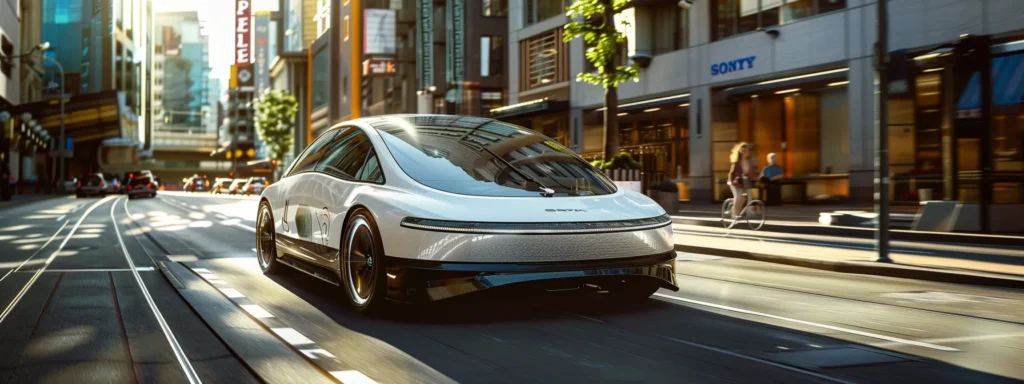
The future of energy efficient automotive technology is rapidly unfolding, characterized by key developments in areas such as autonomous vehicles and their influence on energy consumption, the harnessing of hydrogen as a potent energy source, advancements in the functionality and viability of solar-powered cars, the integration of artificial intelligence into energy management systems, and the analytical forecasting of consumer preferences for fuel-efficient models. These emerging trends signify a transformative phase in the industry, promising enhanced sustainability and innovation in the realm of energy conservation for tomorrow’s transportation.
Autonomous Vehicles and Their Energy Implications
Autonomous vehicles herald a new era in energy efficiency within the automotive sector. These self-driving cars, engineered to optimize route efficiency and decrease idle times, have the potential to reduce energy consumption considerably. By streamlining traffic flow and reducing congestion through coordinated navigation, autonomous vehicles not only improve safety but also promise to lower the carbon footprint of daily commutes and long-distance travel.
The Potential of Hydrogen as an Energy Source
The potential of hydrogen as an energy source for vehicles promises to reshape tomorrow’s automotive landscape. Hydrogen fuel cell technology, which converts hydrogen into electricity, offers a high energy yield and the emission of mere water vapor, making it an attractive zero-emission alternative. As industry pioneers increase investments in this area, hydrogen fuel cell vehicles are poised to become a more common sight, addressing the public’s growing demand for sustainable and efficient transportation options.
Advances in Solar-Powered Cars
Solar-powered cars are moving from concept to reality, harnessing the sun’s abundant energy to reduce reliance on traditional fuel sources. Recent developments include enhanced photovoltaic cells that can cover more of the vehicle‘s surface area, thereby capturing more sunlight and converting it into usable energy more efficiently. As automakers refine designs to optimize aerodynamics and integrate lightweight materials, these vehicles are increasingly able to meet practical range requirements, presenting a promising future for daily commutes and clean energy advancement.
The Role of Artificial Intelligence in Energy Management
The integration of Artificial Intelligence (AI) into vehicle energy management systems represents a significant pivot towards heightened efficiency in the automotive industry. AI’s advanced algorithms can analyze and predict energy consumption patterns, orchestrating battery usage and charging schedules for optimal performance. With this capability, AI empowers vehicles to adapt to various driving conditions and styles, thereby reducing unnecessary energy wastage and improving the overall efficiency of energy-efficient cars.
Predicting Consumer Demand for Energy Efficient Cars
Forecasting consumer demand for energy-efficient vehicles hinges on understanding evolving market trends and regulatory changes. Rising fuel costs, environmental awareness, and government incentives are catalyzing a shift toward greener transportation options. Consumers are increasingly prioritizing energy-efficient models due to their reduced environmental impact and long-term cost savings. Automakers responding to this demand with innovative solutions and diverse offerings are likely to shape future car sales, as more buyers seek vehicles that align with both their ethical stance and economic considerations.
Conclusion
The latest advances in energy-efficient cars, spanning from hybrids to hydrogen fuel cells, underscore a collective drive towards sustainable transportation and reduced environmental impact. Breakthroughs in battery technology and intelligent energy management are pivotal, improving the range and efficiency of vehicles while making them more accessible. Government incentives and evolving infrastructure play a crucial role in accelerating the adoption of these greener vehicles. As the automotive industry continues to innovate, consumers are empowered with dynamic, eco-friendly transportation options that promise a cleaner, more cost-effective future.